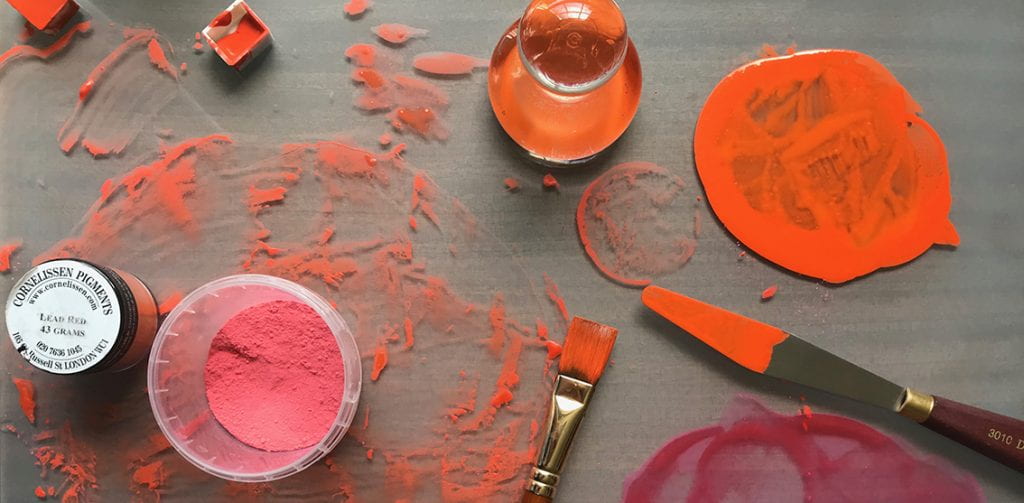A Colour A Day: Week 31. 19th -25th October
Jo Volley writes…
This week’s colours are manufactured by Ruth Siddall who says of them. ‘Procion MX Dyes – The difference between a dye and a pigment is that a dye is soluble in water and a pigment is insoluble. I am experimenting at the moment to try and find as many ways of making the colourful, organic compounds in dyes into insoluble pigments. These are a series of pigments I made by dyeing a starch with modern Procion MX dyes. I used potato starch as a substrate. I have seen modern dyes such as rhodamine being used in this way, so I thought I’d give it a go. If I’m honest, I’m disappointed with the pale colours produced – quite the opposite of the dyes which were intensely coloured! Chemically, Procion MX dyes are dichlorotriazines, which means they contain a ring-shaped molecule with three nitrogen ions so the formula is C3H3N3 (most ring molecules just have six carbons). In addition there are two chlorine ions attached to this ring and it is these that bond to -OH groups in fibres to produce strong dyes on cloth. Starch has -OH groups, so I had hoped it would work the same way here. There is some colour but it’s not as intense as I had hoped for.’
Each pigment is bound in gum Arabic on W&N watercolour paper. They were like no other pigment I have used before – it was rather like trying to paint with clouds – amorphous – the colour just slipping away. According to the American Meteorological Society, amorphous clouds ‘are without any apparent structure at all, as may occur in a whiteout in a thick cloud or fog over a snow surface when one loses any sense of direction – up, down and sideways’
Procion red MX-G
Procion yellow MX-4G
Procion blue MX-2R
Procion yellow MX-3K
Procion turquoise MX-G
Procion composite grey
Procion red – MX-5B

Filed under #Artist, #ArtistsPigments, #Dyes, #Making, #MaterialsResearch, #MaterialsResearchProject, #Methods, #OrganicPigments, #Paint, #painting, #Palettes, #PigmentTimelineProject, #ProcionDyes, #SladeSchool
Tags: #AColourADay, #JoVolley, Materials, Painting, Slade School of Fine Art
No Comments »
 Henry Levison inventor of Liquitex.
Henry Levison inventor of Liquitex.
 Close
Close






